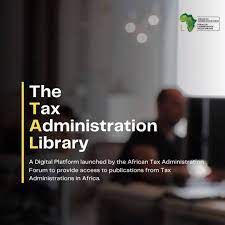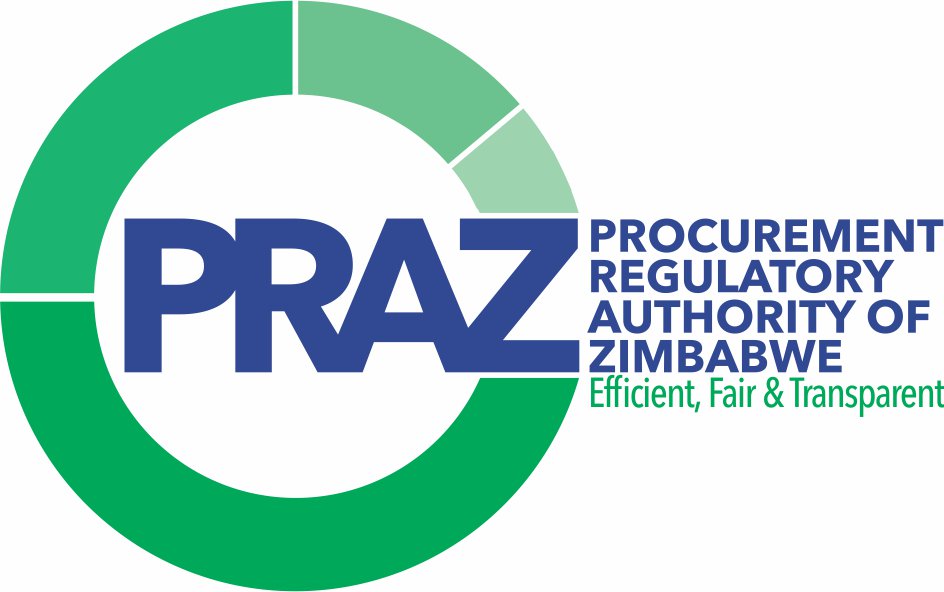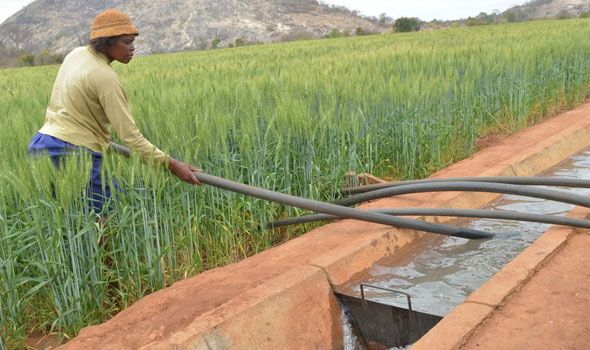Midlands on course to meet 9 000 ha winter wheat target
FARMERS in the Midlands province have to date put over 6 800 ha under winter wheat short of 2 200 ha to meet the 9 000 ha target set for this season.
Winter wheat is mainly grown in Sherwood block and in farms around the Kwekwe district.
There are also some irrigation schemes in Mberengwa, Lower Gweru and Shurugwi which contribute to the provincial target.
Leading farmers such as Mr Douglas Kwande, of the fast-growing Douglas and Claris Kwande (DCK) Investments which own DCK Farm in Kwekwe have put 750ha under wheat which is germinating.
Zimbabwe produced 375 000 tonnes of wheat in 2022, against a national demand of 360 000 tonnes and the Government is targeting to increase the production levels to 408 000 tonnes this year.
Last year’s production made Zimbabwe and Ethiopia the only two wheat secure nations on the continent. Farmers are already responding to the Government’s initiatives as they have ramped up preparations for the farming season.
Some farmers are also chasing the June 15 deadline to have completed the planting process. Last year, the province harvested about 36 000 tonnes of wheat.
Having set a winter target of 6 450 ha the province achieved a record 7 378 ha.
DCK Farm manager Mr Duncan Magaya
The bulk of the planting was done under the Government guaranteed CBZ Agro-Yield programme, while the other hectares were funded by private contractors and through the Presidential Winter Wheat Scheme.
DCK farm manager Mr Duncan Magaya said they have already put 750 ha under winter wheat.
“With wheat we consider timing and that is why we planted early and the crop is already germinating. We have 750 ha under the crop,” he said.
With wheat, if farmers delay planting, the crop will be affected by rain and if it is affected by rain, it will germinate on the field affecting the grade of the crop.
Midlands Provincial Agronomist, Mr Innocent Dzuke, said the province aims to cover 9 000 ha under winter wheat.
He said he was hopeful that the province would surpass the target given more irrigation schemes were rehabilitated.
“We have put 6 800 ha under winter wheat to date as we work towards our target of 9 000ha. We are optimistic that by June 15, we would have surpassed that target,” he said.
Zimbabwe is optimistic that this year’s winter wheat production will surpass last year’s yield of 375 000 tonnes following various interventions implemented by the Government and the private sector to bolster production.
So far, 81 000ha out of the targeted 90 000 ha have been planted countrywide. Farmers are also urged to continue planting wheat until 15 June to ensure that the crop will not be compromised by early rains.
This season, Government is well prepared in supporting wheat better than the previous seasons as it is working closely with important stakeholders such as Zesa and Zimbabwe National Water Authority (Zinwa) to ensure that there is uninterrupted power supply, and enough water for irrigation during the winter wheat cropping season.
The country is earmarking to produce another record harvest this season and become self-sufficient.
In addition to local initiatives to support production, Zimbabwe received a chunk of the US$25,5 million African Development Bank (AfDB)’s fund to boost wheat and food production and avert potential food shortages.
Speaking recently during an Irrigation Stakeholders Indaba, Ministry of Lands, Agriculture, Fisheries, Water and Rural Development Permanent Secretary Dr John Basera said the country is food secure, adding that farmers should continue to work harder so that the country will be the net exporter of food.
The Government has also increased the targeted wheat hectarage of 85 000 ha to 90 000 ha with the aim of increasing productivity for the 2023 winter wheat cropping.
“Our target for this year was 85 000 hectares and we have seen some recent developments and Zimbabwe is one of the two countries in Africa which is food and wheat self-sufficient together with Ethiopia. Those are the two countries which are wheat self-sufficient,” he said.
“We want to target the export market in our region and we want to target this year and it needs to happen. We did it in 2022 where we produced 375 000 tonnes of wheat. It was credible and it was so sweet. We need to do it again and better. We want to surpass what we have achieved.”
Dr Basera challenged farmers this season to continue producing crops surpassing last year’s production.
“We need to be food secure, this is a credible component towards Vision 2030,” he said.
“We are food secure. This is coming from a reality of the projection of about 2,3 million tonnes of maize last season and in addition of 150 000 tonnes of traditional grains. In terms of food and cereals, we are around three million tonnes. I want to challenge farmers to do it again this season.”
Government has also acquired equipment such as tractors and combine harvesters which will be administered through AFC and CBZ banks.
The wheat crop is supported through private contractors, Government’s National Enhanced Agricultural Productivity Scheme (NEAPS), Presidential wheat support scheme and self-financed growers.
CBZ Agro-Yield is targeting at contracting 20 000ha at a projected average yield of 4,8 tonnes/ha, with the estimated production set at 96 000 tonnes.
The AFC Land Bank is targeting to contract 15 000ha with a projected yield of 4,8 t/ha and the estimated production is 72 000 tonnes.
The private sector and self -financed scheme will contract 25 000ha of wheat with a projected average yield of 4.8t/ha to give an estimated production of 120 000 tonnes while the Presidential scheme is targeted for 25 000 ha for wheat.-chronicle











